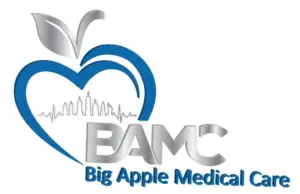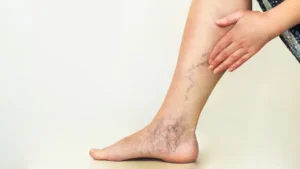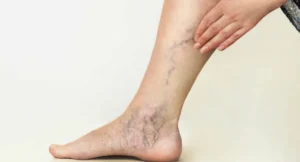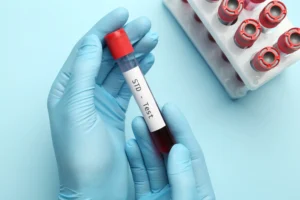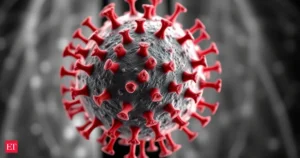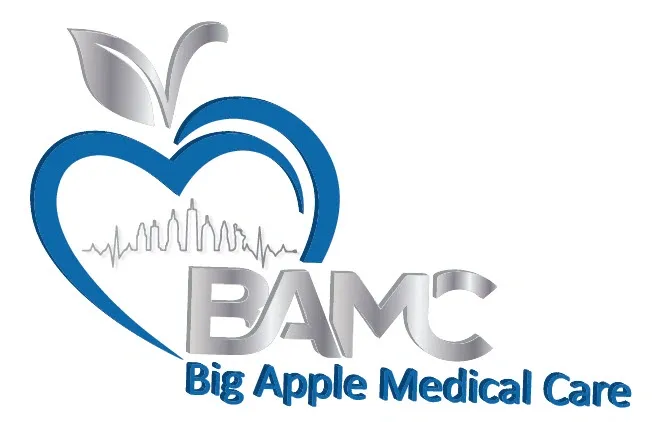What Are the First Signs of Vein Insufficiency?
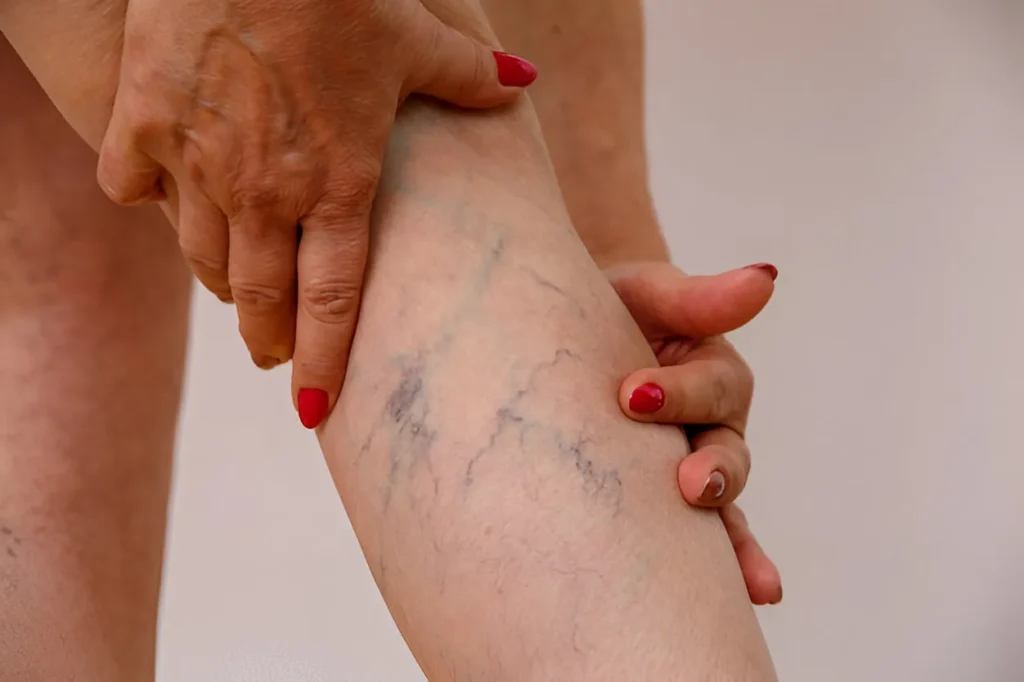
Vein insufficiency, also known as chronic venous insufficiency, occurs when veins struggle to send blood from the legs back to the heart. This common circulatory condition affects millions of Americans but often goes undiagnosed in its early stages because symptoms can be subtle or mistaken for other issues.
The earliest signs of vein insufficiency typically include swelling in the ankles and feet, especially after standing for long periods, persistent leg heaviness or fatigue, and dull aching or cramping in the legs. Other early indicators might include itchy, discolored skin near affected veins and the appearance of spider veins or varicose veins on the surface of the skin, which can be a sign of CVI.
Recognizing these symptoms promptly can lead to earlier intervention and better management of the condition. Many patients find that addressing vein insufficiency in its beginning stages helps prevent progression to more serious complications such as skin changes, ulcers, or deep vein thrombosis.
Recognizing the Early Signs of Venous Insufficiency
Venous insufficiency symptoms typically appear gradually and may be overlooked during early stages. Knowing what to watch for can help you seek treatment before the condition progresses to more serious complications.
Identifying Initial Symptoms
Leg fatigue and heaviness are often the first warning signs of venous insufficiency. These sensations typically worsen during the day, especially after prolonged standing or sitting. Many patients report feeling relief when elevating their legs, particularly in the presence of symptoms of venous insufficiency.
Aching or cramping in the legs, particularly in the calf area, represents another common early symptom. This discomfort may be accompanied by a burning or itching sensation around the affected veins.
Restless legs and nighttime leg cramps can indicate developing venous problems. These symptoms occur when blood pools in the veins instead of returning efficiently to the heart.
Ankle and foot swelling that improves overnight but returns during the day suggests venous insufficiency. This swelling (edema) results from fluid accumulation in tissues when veins fail to properly move blood upward.
Physical Changes in the Legs
Visible varicose veins or spider veins often appear as venous insufficiency progresses, marking the signs of CVI. These enlarged, twisted veins develop when the valves in the veins malfunction, allowing blood to flow backward and pool in the veins, leading to venous disease.
Skin changes around the lower legs and ankles serve as important indicators of venous problems. Look for skin that appears shiny, tight, or discolored – often taking on a reddish-brown hue near the ankles.
Dry, itchy skin in the affected areas may develop as the condition progresses. This can lead to dermatitis and make the skin more vulnerable to damage from minor injuries.
Slow-healing wounds or ulcers, particularly around the ankle area, represent advanced venous insufficiency symptoms. These ulcers develop when poor circulation prevents proper healing and tissue repair.
Understanding Chronic Venous Insufficiency
Chronic Venous Insufficiency (CVI) occurs when leg vein valves malfunction, preventing blood from flowing properly back to the heart, can result in the symptoms of venous insufficiency. This condition develops gradually and affects approximately 40% of adults in the United States.
Functional and Anatomical Causes
CVI primarily develops when valves in leg veins become damaged or weakened. These one-way valves normally prevent blood from flowing backward, but when compromised, blood pools in the veins instead of returning efficiently to the heart.
Several factors can trigger valve dysfunction. Aging naturally weakens vascular structures over time, contributing to the development of vein disease. Previous blood clots or deep vein thrombosis may damage valves permanently.
Genetic predisposition plays a significant role, as some people inherit weaker vein walls or valve structures. Women face higher risks due to hormonal fluctuations, especially during pregnancy when increased blood volume puts extra pressure on the valves in the veins.
Prolonged standing or sitting restricts proper blood circulation, gradually weakening venous walls and valves. Obesity compounds the problem by placing additional pressure on leg veins.
Impact on Leg Vein Circulation
When leg vein valves fail, the vascular system struggles to pump blood against gravity. Blood begins to collect in lower extremities, creating increased pressure in leg veins.
This pressure forces fluid into surrounding tissues, causing swelling and edema. The stagnant blood flow delivers less oxygen to surrounding tissues, leading to skin changes like discoloration and thickening.
The compromised circulation triggers inflammatory responses in vessel walls. Over time, this inflammation damages surrounding tissues and blood vessels further.
Without intervention, leg pain and heaviness become persistent symptoms. The skin may develop a characteristic brown discoloration called hemosiderin staining as red blood cells break down, which is a symptom of venous insufficiency.
Advanced cases may lead to venous ulcers—slow-healing wounds that develop when skin tissue breaks down due to poor circulation and high venous pressure in the veins in your legs.
Managing and Treating Venous Insufficiency
Effective management of venous insufficiency involves both conservative approaches and medical interventions. Treatment strategies focus on improving blood flow, reducing symptoms, and preventing progression of the condition.
Lifestyle and Home Remedies
Elevating the legs above heart level for 15-30 minutes several times daily helps reduce swelling and pressure in the veins. This simple practice can provide significant relief from discomfort.
Regular exercise, particularly walking, swimming, and cycling, improves circulation and strengthens the calf muscles that help pump blood back to the heart. Even 30 minutes of moderate activity most days can make a difference.
Compression stockings are a cornerstone of venous insufficiency management. These specialized garments apply gentle pressure to the legs, promoting better blood flow and preventing fluid buildup. They come in various compression levels based on individual needs, especially for those with damaged veins.
Weight management is crucial as excess pounds put additional pressure on veins. A balanced diet rich in fiber and low in salt helps reduce swelling and supports overall vascular health.
Medical Interventions
When conservative measures aren’t sufficient, wearing compression stockings may be recommended as a treatment for symptoms of chronic venous insufficiency. vascular surgeon may recommend more advanced treatments. A thorough evaluation helps identify the presence of damaged veins and the severity of vein disease. diagnose venous insufficiency accurately and determine appropriate interventions.
Sclerotherapy involves injecting a solution into affected veins, causing them to collapse and fade. This outpatient procedure works well for smaller veins and spider veins.
Endovenous laser treatment (EVLT) uses laser energy to seal problematic veins. It’s minimally invasive with quick recovery times and excellent success rates for treating larger varicose veins.
For advanced cases, Big Apple Medical Care offer specialized treatments:
Big Apple Medical Care
📍 Address: 7322 5th Ave, Brooklyn, NY 11209
📞 Phone: 718-333-5120
🌐 Website: https://www.bigapplemedicalcare.com/
A personalized treatment plan typically combines multiple approaches based on the severity of symptoms, underlying causes, and patient preferences. Regular follow-up visits help monitor progress and adjust treatments as needed.
Frequently Asked Questions
Venous insufficiency typically manifests through several distinct signs and symptoms that patients should recognize early for timely intervention. Understanding these indicators can help individuals seek appropriate medical attention before complications develop.
What are the initial symptoms of early-stage venous insufficiency?
The earliest signs include leg fatigue and heaviness, which may indicate the onset of venous disease. leg heaviness, swelling around the ankles that worsens throughout the day, and mild pain that improves with leg elevation.
How can one recognize the onset of venous insufficiency by observing their legs?
Visual indicators include visible varicose veins, skin discoloration around the ankles, and slight swelling that creates a depression when pressed with a finger.
What dietary changes can potentially support venous insufficiency management?
A low-sodium diet Rich in flavonoids (found in berries and citrus fruits) can reduce swelling, while adequate fiber helps prevent constipation that may worsen venous pressure in the veins in your legs.
Can increased hydration have a positive impact on venous insufficiency?
Proper hydration thins the blood, improving circulation and reducing the risk of clot formation in compromised veins.
What are the primary causes behind the development of venous insufficiency?
Genetic predisposition, prolonged standing or sitting, pregnancy, obesity, aging, and history of deep vein thrombosis are the most common factors contributing to venous insufficiency.
Are there any warning signs that suggest a progression in venous insufficiency?
Increasing leg pain, expanding areas of skin discoloration, hardening of the skin, development of ulcers, or recurrent superficial thrombophlebitis indicate worsening of the condition requiring prompt medical attention at Big Apple Medical Care.
